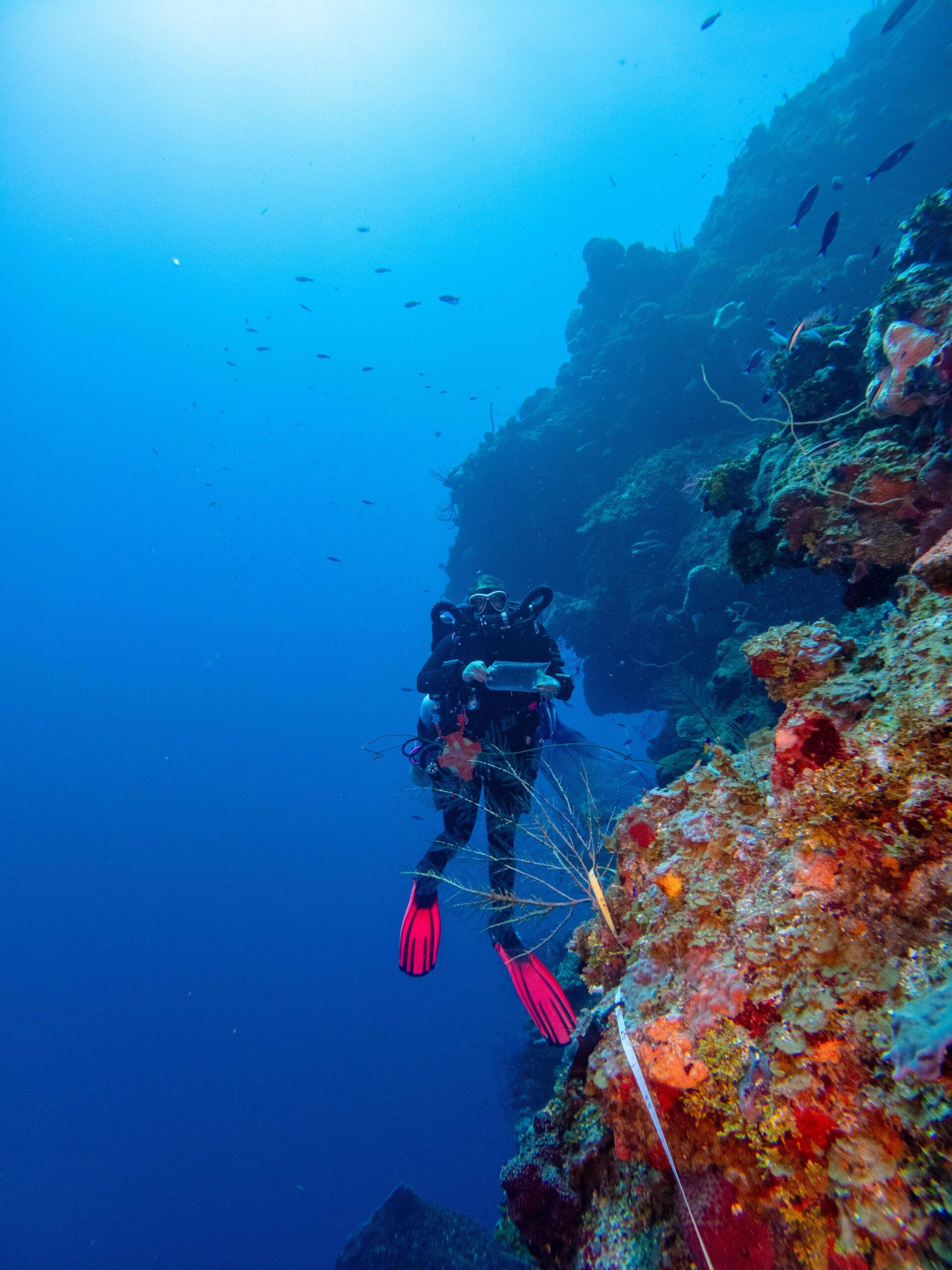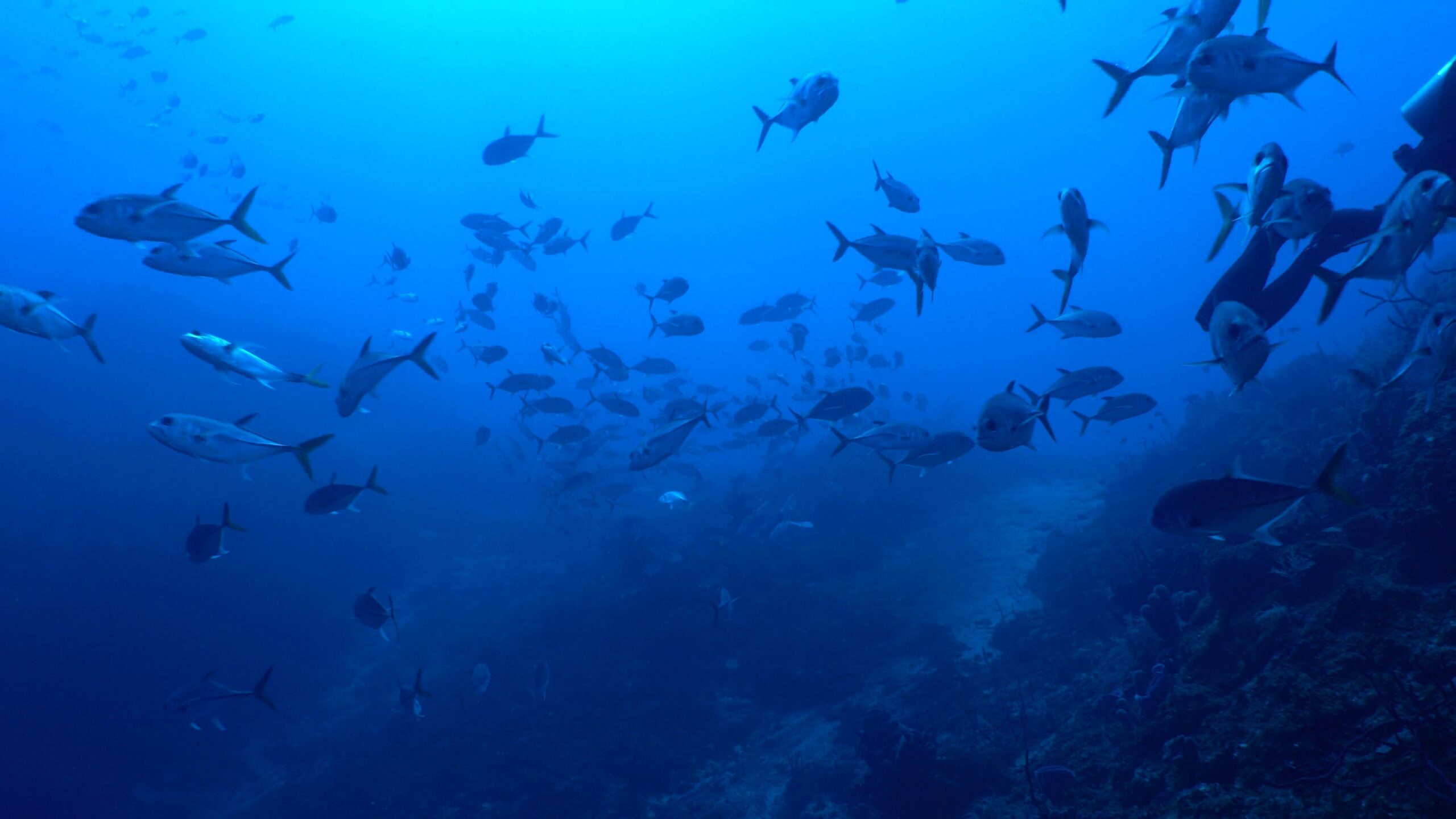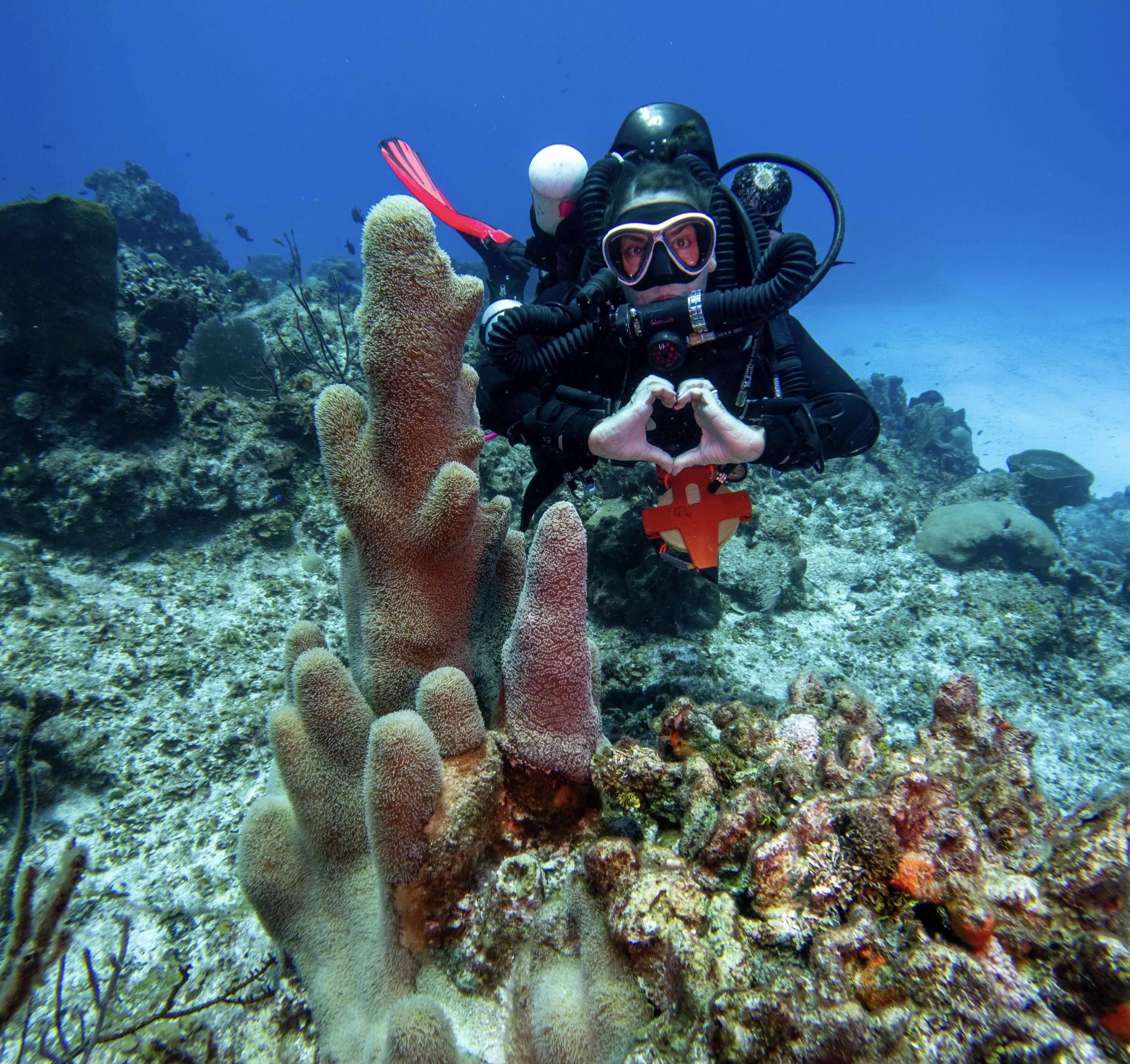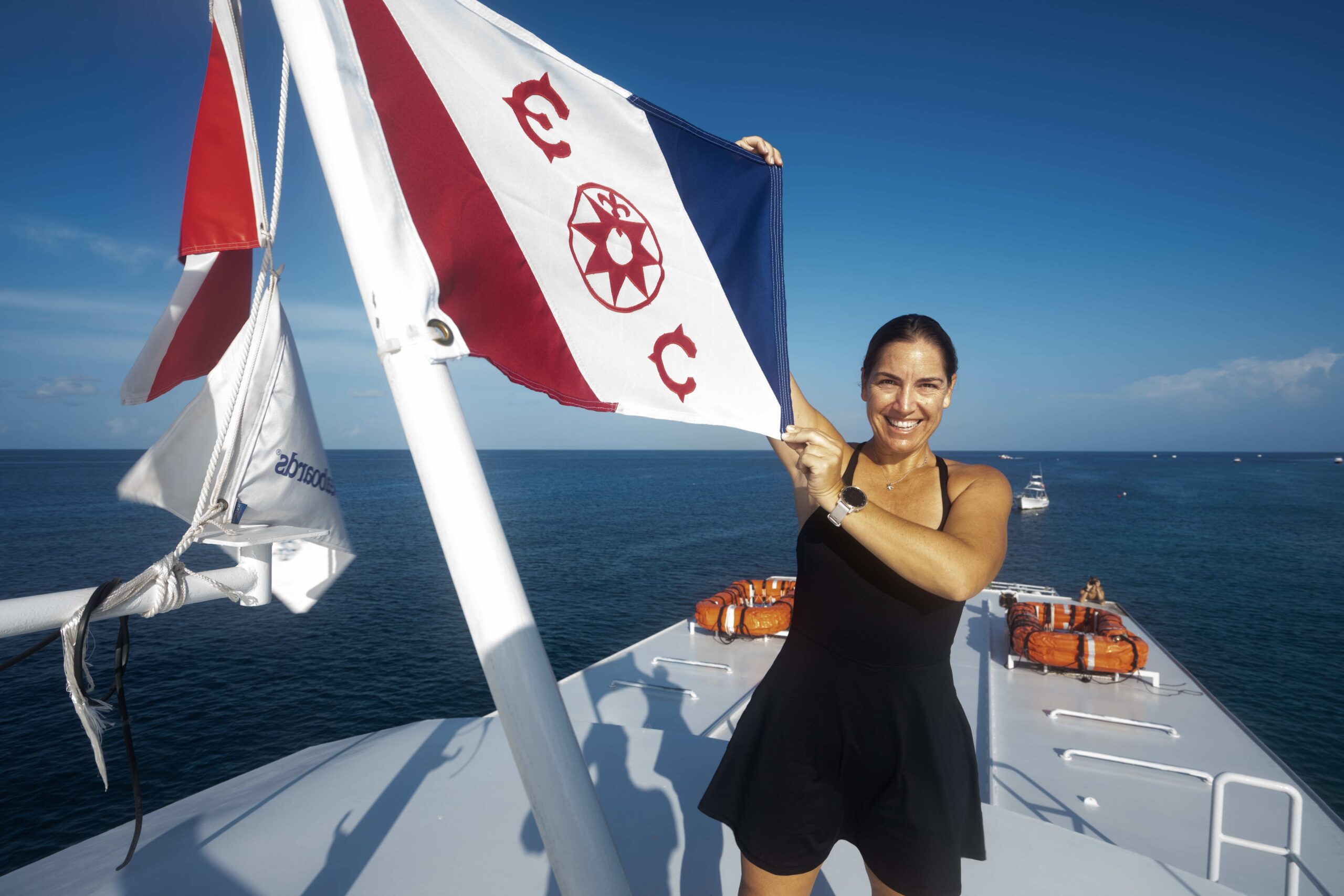The world’s oceans make up the largest ecosystem on Earth. They cover almost three-quarters of the Earth, produce half of the oxygen we breathe, and regulate climate and chemistry vital to planetary health. Despite this, researchers estimate that less than 10% of marine life has been discovered, and only a fraction of the ocean floor has been mapped.
The fundamental reason for this lack of knowledge is the difficulties that marine scientists face in gaining access to the resources necessary to research ocean environments. In response, EYOS collaborated with Nekton, Arksen, BOAT International, and the Ocean Family Foundation to help create Yachts For Science (YFS), an organization aiming to bring together yacht owners with marine scientists, researchers, and content creators and provide access to the oceans by utilizing the thousands of yachts that are traveling the globe as platforms for research.
With support from EYOS and YFS, Dr. Gretchen Goodbody, a renowned marine scientist specializing in benthic and pelagic ecosystems, is leading an ambitious project to uncover the biodiversity of offshore seamount communities in the Caribbean. Using cutting-edge technologies such as in-situ surveys, photogrammetry, benthic mapping, and genetic analyses, her team aims to illuminate the ecological role of these critical underwater habitats. Coral reef systems, often described as biodiversity hotspots, provide essential benefits to millions of people yet face increasing threats from overfishing and climate change. Offshore seamounts serve as vital stepping-stones for many species, shaping marine biogeography, but these delicate ecosystems are increasingly at risk due to unsustainable fishing practices. Dr. Goodbody’s work not only contributes to scientific understanding but also offers an unprecedented opportunity for yacht owners to transform their vessels into research platforms.
Join us for a Q & A with Dr. Goodbody on her fascinating and important work.
-
Your project explores the biodiversity of benthic and pelagic communities. What unique insights have emerged so far about these ecosystems, and how do they influence broader marine biodiversity?
Our work investigating benthic and pelagic communities across remote offshore seamounts has yielded fascinating discoveries that reshape our understanding of Caribbean marine biodiversity. These submerged mountains—often overlooked—harbor an unexpectedly high diversity of fish, corals, and sponges, mirroring the richness typically observed along the main Cayman Islands at similar depths. Particularly exciting are the healthy coral populations we’ve documented, even on the more distant seamounts, alongside a notable abundance of sharks. Among our most remarkable finds were several colonies of the endangered pillar coral, a species rarely encountered elsewhere. These observations suggest that seamounts could serve as vital refuges—natural strongholds capable of safeguarding biodiversity in the face of mounting environmental pressures.

-
Seamounts play a critical role as stepping stones for marine species. Can you explain how mapping and studying these ecosystems will contribute to understanding species migration and biogeography?
Seamounts also play a strategic role in the larger tapestry of marine life, acting as ecological stepping-stones across vast oceanic expanses. Many marine species, especially those not adapted for long-distance dispersal, depend on these submerged waypoints for survival. Individuals carried off-course by ocean currents may find critical respite on these undersea islands, making them essential for maintaining connectivity between populations and supporting species migration. However, these ecosystems remain largely unexplored. Our project is among the first to generate detailed biological and ecological data from Cayman’s seamounts—information that will be instrumental for marine spatial planning, conservation policy, and biodiversity management in the region.

-
Deploying advanced technologies like photogrammetry and genetic analyses in remote marine environments presents logistical challenges. How have EYOS and Yachts for Science supported your efforts in overcoming these challenges?
Of course, studying such remote environments doesn’t come without its challenges. Chief among them is access. Conducting scientific dives and deploying advanced tools like photogrammetry and genetic sampling in open ocean conditions requires a vessel that is both large enough to accommodate technical divers and capable of withstanding rough seas. As part of a grant provided through the UK Darwin Plus initiative we’ve completed two expeditions to the nearer seamount—one as a series of day trips and another via a liveaboard—and a third expedition to the more remote site, launched from Little Cayman. Yet, our ability to continue this vital work is constrained by funding for vessel time. The availability of private yachts through YFS presents a game-changing opportunity to scale up our exploration efforts.
-
This project invites yacht owners to actively participate in conservation by turning their vessels into exploration platforms. What can participants expect to experience during these seamount surveys, and how do they contribute to the project’s success?
For yacht owners, the Lost 4th Island Project offers a unique opportunity to engage directly in meaningful ocean conservation. The seamounts, although offshore, have shallow areas that can be explored with standard scuba gear, allowing participants to join our scientific team on dives to these extraordinary underwater landscapes. Beyond diving, there are opportunities to assist with the research itself—such as helping process coral and sponge samples for genetic analysis. It’s a rare chance to witness and contribute to cutting-edge science in action.

-
Looking to the future, what are the next steps for the Lost 5th Island project, and how can continued partnerships with Yachts for Science help advance the protection of these fragile marine ecosystems?
Looking ahead, we’ve completed the initial phase of the project, but in truth, we’ve only begun to scratch the surface. The next step is clear: to return to both seamounts regularly, expanding our datasets and deepening our understanding of these critical ecosystems. Continued partnership with Yachts for Science could be the key to unlocking the full potential of this research, ensuring that these underwater refuges are not only explored but also protected for generations to come.
Through Yachts for Science (YFS), EYOS Expeditions is facilitating this groundbreaking research by seeking superyachts cruising near Grand Cayman to host short-term, immersive exploration voyages lasting 2-6 days. This unique collaboration invites yacht owners to actively participate in preserving marine biodiversity while gaining firsthand knowledge from some of the most experienced deep-sea divers in the Caribbean.
